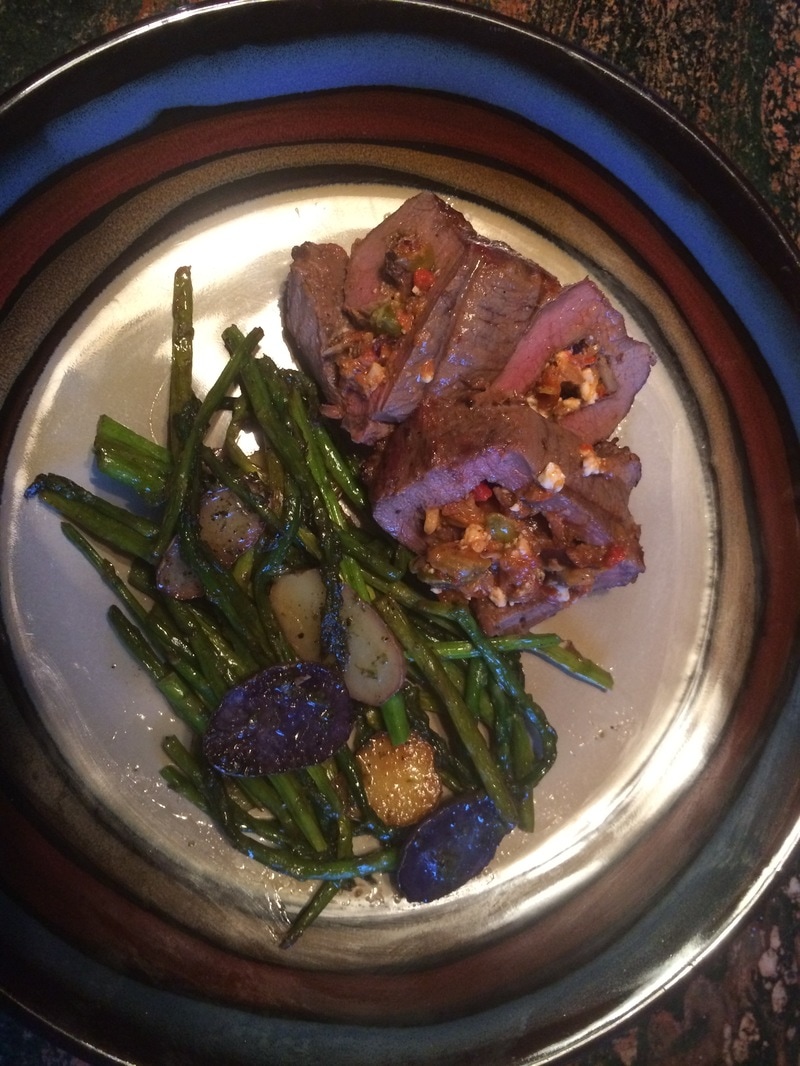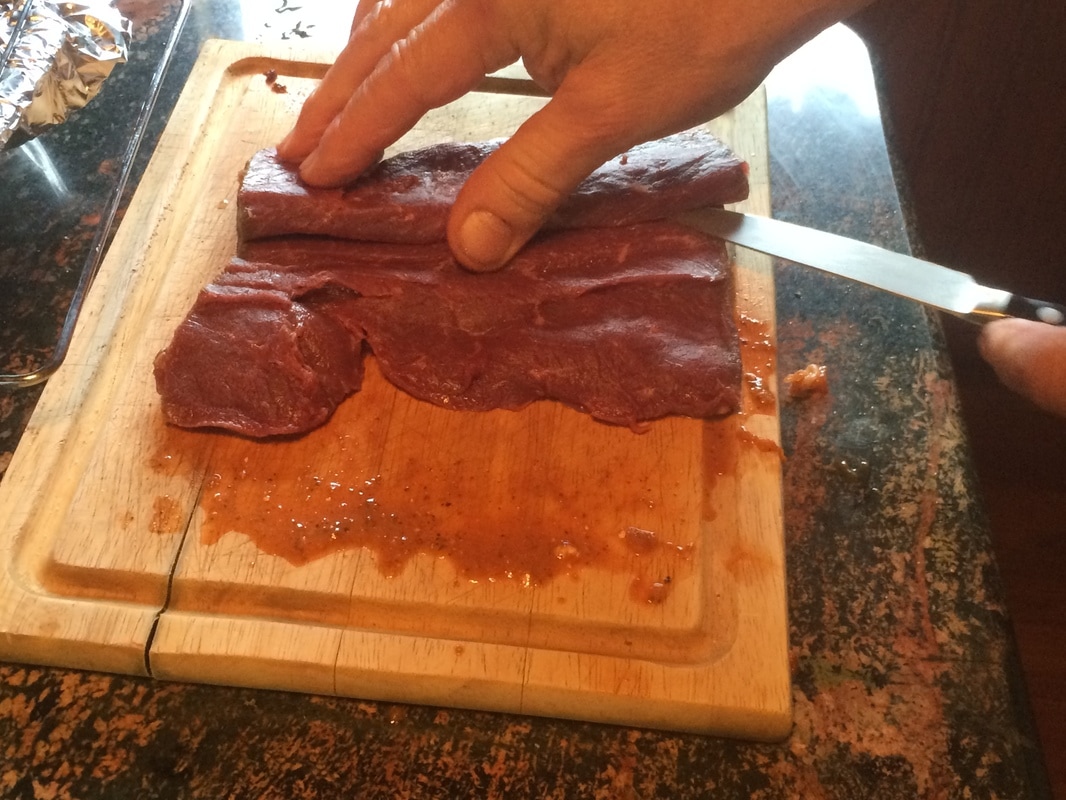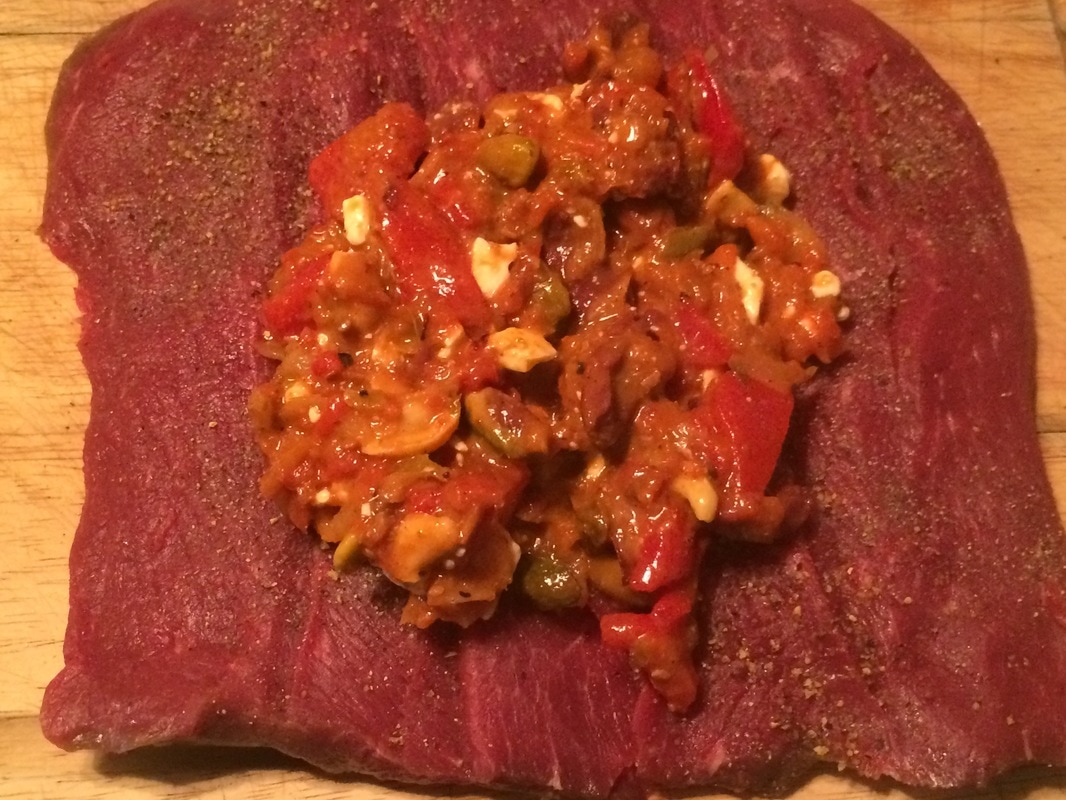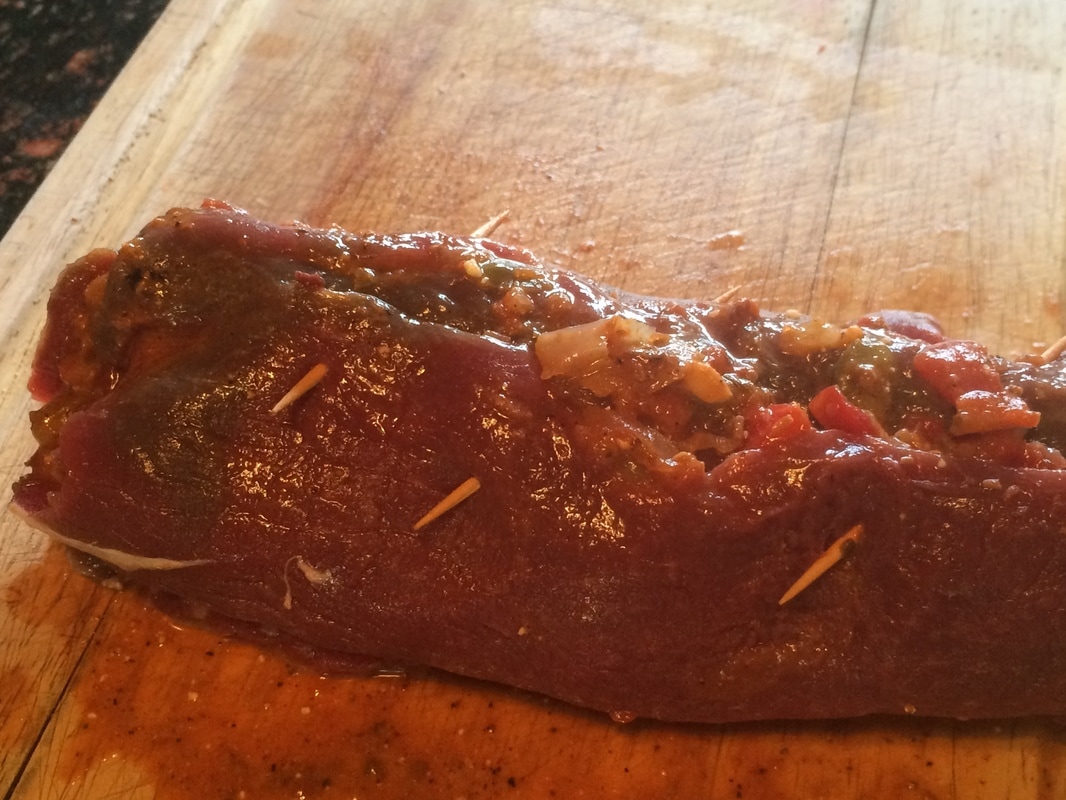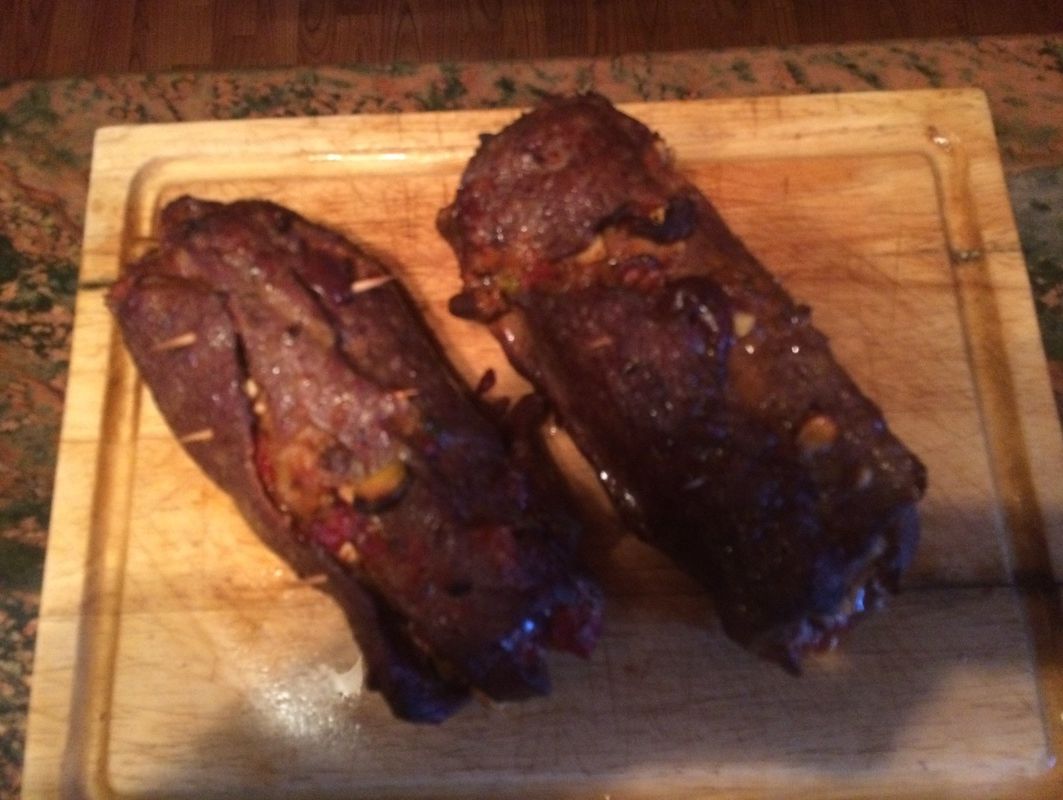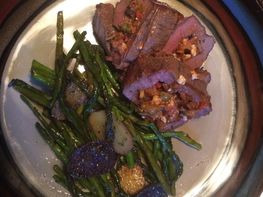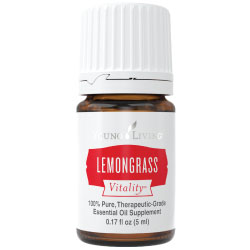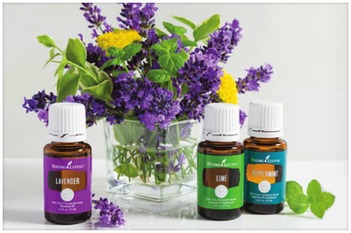WHAT'S NEW ON THE HOMESTEAD?
by Mary A. Lainhart Winter IntrospectionWinter is my perfect time for introspection. It is a slower time where I can finally reflect, review and plan. It is my time to pause, breathe and gather new thoughts.
Last year, I had the notion of possibly adding heritage pigs to our homestead. After weighing the benefits and the commitments, we decided the timing wasn’t right for pigs for us. Last spring, we welcomed Iseabail, our newest heifer. Iseabail was our second heifer in two years. We were really hoping for a bull this year to harvest for beef in a couple years. Now, we have a herd of four, which will soon be three, in a few months when we harvest our first Scottish Highland steer to fill our freezer. We decided last year to not breed Momma cow again. We still are unable to comfortably handle her. We worked on handling Holy Cow, who was born two years ago. She is much more amicable to humans and loves the attention. We contemplated breeding her this Spring. After thinking long and hard about our cow venture, we have come to the conclusion to probably not breed again. Our goal with the cows was always to have our own beef. That goal remains unchanged. We have decided to sell the Momma cow, and both heifers. Once we do, we will re-group and start over again with the focus on having a steer for beef. |
Stuffed Rolled Venison Loin
fresh from this year's deer season (click on photo above for printable version of recipe) |
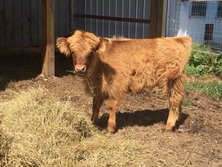
When we embarked on our chicken adventure two years ago, Bucky never imagined that all 21 chicks would survive. He was kind of right – we lost two to natural causes, leaving us with our current flock of 19 hens. Last summer we were drowning in fresh eggs; this past December, egg production pretty much stopped. Our chickens were going through their first moult. This was my first experience with moult, so back to doing research and educating myself about what was happening with my hens and what would the future with our chickens look like. Do we need 19 hens? No. Do we need 1 ½ dozen eggs a day like last year? No. I had thought about eating some of them. We are buying all natural feed for our flock of birds with no reward for possibly months to come. After pondering the layer hen situation, I decided to wait out the lack of egg production until Spring. At that point we still may consider culling our flock to a more manageable number. As I write this, the hens have slowly started laying again, now that their moult is almost over. Another decision that I made was to freeze eggs during peak production, so I have them on hand during their next moult, for baking, omelettes, quiches, etc. (See below on how to freeze your eggs).
In 2017, we have some modifications to make with our cow herd and our flock. Having a homestead and growing your own animals for food requires periodic evaluation of not only your animals, but your goals with them and your goals for yourself. The past two years have been a huge learning experience and I would not have traded it for anything. As we continue on this journey, there is always much more to learn about not just our animals, but also ourselves.
In 2017, we have some modifications to make with our cow herd and our flock. Having a homestead and growing your own animals for food requires periodic evaluation of not only your animals, but your goals with them and your goals for yourself. The past two years have been a huge learning experience and I would not have traded it for anything. As we continue on this journey, there is always much more to learn about not just our animals, but also ourselves.
HOW TO FREEZE YOUR EGGS
from Jill Winger, The Prairie Homestead
www.theprairiehomestead.com
3 Tablespoons of the egg mixture = 1 egg in recipes
***Alternate freezing method*** You can also pour the scrambled egg mixture into individual ice cube trays. Just pop out a couple cubes anytime you need just an egg or two for a recipe.
(Editors Note: I typically freeze eggs in quantities of two per container and use smaller freezer containers. That is typically what I use for baking and cooking and that way I do not thaw more than I need to, at one time.
from Jill Winger, The Prairie Homestead
www.theprairiehomestead.com
- Select the freshest eggs that you can
- You can choose to freeze yolks and white separately, or together. I chose to freeze the whole egg together.
- Crack as many eggs as you with into a freezer safe container (I use a Tupperware-style plastic container with a lid). Eggs cannot be frozen in the shell since they will expand and break.
- GENTLY stir the yolks and whites together. Try not to beat a lot of extra air into the mixture.
- *Optional Step* Add ½ tsp of honey OR salt to each cup of whole eggs. This is said to help stabilize the yolk after thawing. Be sure to mark what you used in the label so you can adjust your recipes accordingly, if need be. (EDITORS NOTE: I personally, omitted this step and did not have any issues with my yolks after thawing)
- Label and freeze for up to 6 months
- When you are ready to use your eggs, allow them to thaw in the fridge.
3 Tablespoons of the egg mixture = 1 egg in recipes
***Alternate freezing method*** You can also pour the scrambled egg mixture into individual ice cube trays. Just pop out a couple cubes anytime you need just an egg or two for a recipe.
(Editors Note: I typically freeze eggs in quantities of two per container and use smaller freezer containers. That is typically what I use for baking and cooking and that way I do not thaw more than I need to, at one time.
RECIPES
Stuffed Rolled Venison Loin
by Bucky Lainhart
by Bucky Lainhart
Ingredients:
Venison Loin (backstrap)
Kalamata olives (chopped)
Roasted red peppers (chopped) or Tassos® Roasted Red Pepper and Cheese Spread
Pistachios (finely chopped)
Feta cheese or Asiago cheese
Olive Oil
Lemon pepper
Garlic powder or minced garlic
Salt
Pepper
(Ingredients for filling are a recommendation. Experiment with other flavors that you like to customize recipe to your taste. All seasonings are to taste).
Venison Loin (backstrap)
Kalamata olives (chopped)
Roasted red peppers (chopped) or Tassos® Roasted Red Pepper and Cheese Spread
Pistachios (finely chopped)
Feta cheese or Asiago cheese
Olive Oil
Lemon pepper
Garlic powder or minced garlic
Salt
Pepper
(Ingredients for filling are a recommendation. Experiment with other flavors that you like to customize recipe to your taste. All seasonings are to taste).
Directions:
1. Remove silver skin from loin
2. Start cut on loin about 1/4” from top, cutting lengthwise to within ¼” – ½” of the other edge of loin. Unroll what you have cut, then do the same cut in the opposite direction. Repeat cuts until the loin is flat and unrolled. Loin should be about ¼” thick.
1. Remove silver skin from loin
2. Start cut on loin about 1/4” from top, cutting lengthwise to within ¼” – ½” of the other edge of loin. Unroll what you have cut, then do the same cut in the opposite direction. Repeat cuts until the loin is flat and unrolled. Loin should be about ¼” thick.
3. Lay loin out on cutting board. Lightly season with Lemon Pepper. Set aside.
4. In a medium bowl, mix all other ingredients. Add only enough olive oil to mix ingredients and help bind. If using a spread, it is not necessary to add olive oil.
5. Spread an even layer of mixture onto the loin. Don’t spread so thick that you can’t roll it.
6. Start rolling your loin as tight as you can, slowing rolling and tucking filling in, as needed. Secure roll with toothpicks. Lightly rub roll with olive oil.
4. In a medium bowl, mix all other ingredients. Add only enough olive oil to mix ingredients and help bind. If using a spread, it is not necessary to add olive oil.
5. Spread an even layer of mixture onto the loin. Don’t spread so thick that you can’t roll it.
6. Start rolling your loin as tight as you can, slowing rolling and tucking filling in, as needed. Secure roll with toothpicks. Lightly rub roll with olive oil.
7. Place rolled loin onto a wire rack in a roasting pan. Bake in a pre-heated 400 degree F oven for 15-20 minutes or until the interior temperature of the meat is 130-140 degrees F. Half way through baking, turn roll over so it cooks evenly on both sides. BE SURE NOT TO OVERCOOK! Venison should be served at a medium wellness.
8. Remove from the oven, carefully remove toothpicks. Cut stuffed venison loin roll into ¾” – 1” slices, on the bias.
9. Serve immediately. ENJOY!
8. Remove from the oven, carefully remove toothpicks. Cut stuffed venison loin roll into ¾” – 1” slices, on the bias.
9. Serve immediately. ENJOY!
Click on photo of Stuffed Rolled Venison Loin at top of page for printable version of recipe
ESSENTIAL OILSEach month we will share ways on how to safely use essential oils on your equines and your other pets. These are recommendations and not all inclusive uses of essential oils for your animal. Remember, all animals are individuals - so observe their behavior as you use essential oils (or anything) to see how they react to them.
WAYS TO USE ESSENTIAL OILS:
|
|
LEMONGRASS ESSENTIAL OIL
Originating in Southeast Asia, Lemongrass essential oil is distilled from the leaves and woody stalks of the lemongrass plant. With a subtle citrus-herb scent, Lemongrass oil offers a sophisticated and relaxing aroma that transforms your home’s environment.
Lemongrass Vitality™ essential oil (Cymbopogon flexuosus) not only invigorates senses with its bright, lemony scent, but it can also support wellness. The delicate citrus flavor of Lemongrass Vitality oil complements many dishes—especially Asian recipes—and can be incorporated into your seasonings for meals in various cuisines. To keep hydrated while enjoying the benefits of Lemongrass Vitality, add a couple of drops to a glass of water or a hot cup of complementing tea for a zip of flavor. |
Suggestions for using Lemongrass Essential Oil:
Natural Deodorizer
Use lemongrass oil as a natural and safe air freshener or deodorizer. You can add the oil to water and use it as a mist or use an oil diffuser or vaporizer. By adding other essential oils, like lavender or peppermint, you can customize your own natural fragrance.
Muscle Relaxer
Lemongrass oil benefits also include pain and ache relief. The oil helps to improve blood circulation, and can therefore relieve muscle spasms, back aches, sprains, and cramps. Try rubbing diluted lemongrass oil on your body or make your own lemongrass oil foot bath.
Detoxifying
Lemongrass oil or tea has been used as a detoxifier in several countries. It is known to detox the digestive tract, liver, kidneys, bladder, and pancreas. Because it works as a diuretic, consuming lemongrass oil will help you to flush harmful toxins out of your body. Keep your system clean by adding lemongrass oil to your soup or tea. Make your own lemongrass tea by adding a few drops of essential oil to your tea.
Menstrual Cramp Relief
Drinking lemongrass tea is known to help women with menstrual cramps; it can also help with nausea and irritability.
Headache Relief
The calming and soothing effects of lemongrass oil has the power to relieve the pain, pressure, or tension that can cause headaches. Try massaging diluted lemongrass oil on your temples and breathe in the relaxing lemony fragrance.
Topical: Dilute 1 drop with 4 drops of V-6™ or olive oil. Test on small area of skin on the underside of arm and apply to desired area as needed.
Aromatic: Diffuse up to 30 minutes 3 times daily.
Natural Deodorizer
Use lemongrass oil as a natural and safe air freshener or deodorizer. You can add the oil to water and use it as a mist or use an oil diffuser or vaporizer. By adding other essential oils, like lavender or peppermint, you can customize your own natural fragrance.
Muscle Relaxer
Lemongrass oil benefits also include pain and ache relief. The oil helps to improve blood circulation, and can therefore relieve muscle spasms, back aches, sprains, and cramps. Try rubbing diluted lemongrass oil on your body or make your own lemongrass oil foot bath.
Detoxifying
Lemongrass oil or tea has been used as a detoxifier in several countries. It is known to detox the digestive tract, liver, kidneys, bladder, and pancreas. Because it works as a diuretic, consuming lemongrass oil will help you to flush harmful toxins out of your body. Keep your system clean by adding lemongrass oil to your soup or tea. Make your own lemongrass tea by adding a few drops of essential oil to your tea.
Menstrual Cramp Relief
Drinking lemongrass tea is known to help women with menstrual cramps; it can also help with nausea and irritability.
Headache Relief
The calming and soothing effects of lemongrass oil has the power to relieve the pain, pressure, or tension that can cause headaches. Try massaging diluted lemongrass oil on your temples and breathe in the relaxing lemony fragrance.
- Dilute Lemongrass with V-6™ Vegetable Oil Complex for massage after workouts, sports, or just a long and busy day. The fresh aroma will help you unwind.
- To fill your home with the clean and refreshing smell of Lemongrass, diffuse 8–10 drops in your favorite diffuser and add a few drops to your cleaning formulas.
- Make your own substitute for chemical-based air fresheners. Add up to 10 drops to a small spray bottle filled with distilled water and spritz over carpets, furniture, and linens to eliminate stale odors.
Topical: Dilute 1 drop with 4 drops of V-6™ or olive oil. Test on small area of skin on the underside of arm and apply to desired area as needed.
Aromatic: Diffuse up to 30 minutes 3 times daily.
- Caution: Keep out of reach of children. Keep away from eyes and mucous membranes. If you are pregnant, nursing, taking medication, or have a medical condition, consult a health professional prior to use.
LEMONGRASS FOR YOUR ANIMALS
According to Melissa Shelton, DVM - author of The Animal Desk Reference, Essential Oils for Animals, Lemongrass is used in animals for a variety of conditions. It has powerful antifungal action, regenerates connective tissue and ligaments, improves circulation, promotes lymph flow, is anti-inflammatory, antibacterial, anti-parasitic. It is specifically used for bladder infections, respiratory and sinus infections, cruciate injuries, muscle injuries, Salmonella, MRSA, fluid retention and edema, digestive issues, and parasites. Lemongrass is a rather "hot" oil when applied to animals topically, and is generally used diluted. Lemongrass is yellow in color, and will stain light and white colored animals temporarily.
Birds: Lemongrass can be used via water-based diffusion (starting with 2 drops added to the diffuser), including caging and tenting techniques.
Cats: Individual use of Lemongrass can include water diffusion, Petting (diluted), and Litteroma (some cats may refuse this)
Dogs and Larger: Lemongrass is most commonly used with air and water diffusion, direct topical application (often diluted), Petting (neat or diluted), and water and oil misting.
Cats: Individual use of Lemongrass can include water diffusion, Petting (diluted), and Litteroma (some cats may refuse this)
Dogs and Larger: Lemongrass is most commonly used with air and water diffusion, direct topical application (often diluted), Petting (neat or diluted), and water and oil misting.
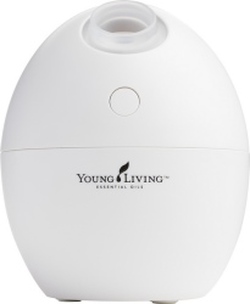
The new portable Orb™ Diffuser is specially designed to be spill-proof, making it ideal for the office, the car or at home, and provides intermittent (blue LED light) or continuous (green LED light) diffusion for up to 4.5 hours. Includes three essential oil wicks.
Dimensions: 10.5cm Tall x 9cm in Diameter
How to Use: Fill the base with tap water, add 5-6 drops of essential oil directly onto the oil diffuser wick, close the diffuser, and select intermittent or continuous diffusion. See instruction booklet for complete usage details.
NOTE: THE USB CORD FOR THE USB DIFFUSERS WILL ALSO PLUG INTO AN APPLE iPhone plug so you can plug directly into a wall outlet for use anywhere in your home or barn.
Available in the Wild Heart Mustangs™ SHOP under Young Living Essential Oils.
|
Mary Lainhart is a Young Living OIls independent distributor because after years of her own successful use of them, she's confident of the purity and quality of Young LIving products. The Everyday Oils™ collection is the perfect beginner's kit, containing ten of Young Living's most popular and versatile essential oils. This kit will become a useful part of your day, everyday.
|
What is the difference between Young Living Essential Oils and their Vitality™ Line?The Vitality ™ oils aren’t really new. The labels are, yes, but in reality, these are oils that Young Living was already selling. What’s setting them apart is that these ones are labeled for internal usage whereas the regular essential oils are labeled for aromatic and topical usage. If you’re wondering, that means that, yes, they are the exact same oils. For example, Lemon Vitality™ essential oil is exactly the same as regular Lemon essential oil. But, because of FDA’s regulations on essential oils, they must be marked separately.
Dietary Essential Oils
Perfect for adding flavor to your favorite foods or using as dietary supplements, the Vitality™ line of dietary essential oils gives you the freedom to share and explore some of our best-loved essential oils in a variety of nutritious and delicious ways. We invite you to discover Vitality™—for food, for family, for life! |
RESOURCES FOR HOMESTEADERSDISCLAIMERThe information contained on this website is not meant to diagnose, treat, cure, or prevent any disease. The information on this website represents what I have chosen to do to take charge of my own personal health and that of my family. Statements on this website have not been evaluated by the Food and Drug Administration. If you are pregnant, nursing, taking medication, or have a medical condition, consult your physician before using these products.
Information found on this website is meant for educational and informational purposes only, and to motivate you to make your own health care and dietary decisions based upon your own further research and in partnership with your health care provider. |
